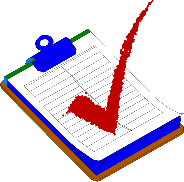Part 2: Reconciling at Every Step
The key to controlling food cost is reconciliation. Every X step or action in the cost-control process is checked and reconciled with another person. Once these systems are set up, management's responsibility is to monitor them with daily involvement. Should all the steps and procedures be adhered to, you will know exactly where every dollar and ounce of food went; there are no loopholes.
- Teach them. Management must be involved in the training and supervision of all employees. For any cost-control system to work, employees must be trained and know what actions are expected of them. It is management's responsibility to supervise employees and see that they receive this training.
- Communicate. Daily involvement and communica tion is needed in order to succeed. Employees must follow all procedures precisely. If they do not, they must be informed of their specific deviations from these procedures and correct them. This is a daily task that involves a hands-on management style.
- Enforce. Any control initiated is only as good as the manager who follows up and enforces it. The total amount of time a manager needs to complete all of the work that will be described in this section is less than one hour a day. There is no excuse for not completing each procedure every day. A deviation in your controls or involvement can only lead to a loss over the control of the restaurant's costs.
- Tracking. Although a simple manual system is detailed here, many of your cost-control procedures can be tracked through your computerized accounting system and/or POS system. Many of the basic purchasing and receiving functions are found in virtually all off-the-shelf accounting programs.
75 Possible Food-Cost Problem Areas
1. No balance of high- and low-cost items on the menu.
2. No consideration of locally obtainable products.
3. No competitive purchasing plan.
4. Theft in any form.
5. Purchasing more than needed (spoilage).
6. No daily check of invoices, quality and prices.
7. Improper rotation procedures.
8. Too many items on the menu.
9. Not enough low price - high food- cost percentage items on the menu.
10. No perpetual inventory in place.
I I. No controls on issuing items from storage areas.
12. Low yields on products.
13. Over-preparing (waste, spoilage).
14. Approving invoices without checking deliveries and following procedures.
15. Not using or following exact standardized recipes.
16. Not following exact portion sizes.
17. Improper handling (wrapping, rotating, storing).
18. No reconciliation of food sold vs. food consumed.
19. Employee pilferage including snacking on food items.
20. Orders not correctly received.
21. Frozen food not rotated.
22. Negative relationships with suppliers.
23. Freezer doors not closed properly.
24. Dry foods not stored properly allowing spoilage and bug infestation.
25. Not implementing a HACCP program.
26. Freezers and walk-ins located too close to back door, convenient for theft.
27. The manager not occasionally checking the dumpster and garbage cans at an unexpected time.
28. Use clear plastic containers in the kitchen to collect "waste." Each kitchen staffer should get his or her own container. Garbage cans are too easy to throw "waste" into.
29. Credit not received from vendor for returned merchandise.
30. Chemicals stored next to food causing possible poisoning.
31. Dry food areas are not well organized causing over-ordering.
32. Frozen-food area is not well organized causing over-ordering.
33. Perishable items left out of refrig erated area.
34. Food used in the bar and recorded in bar sales.
35. Failure to raise prices when food costs increase.
36. Food purchased at cost for personal use.
37. No reconciling of kitchen checks and guest checks.
41. Opened containers not properly sealed developing spoilage because of air flow.
42. Frozen products stored too close together.
43. Rusty and/or dirty shelving.
44. Supply room doors not locked.
45. Reprocessing of previously paid invoices for payment.
46. Poor paperwork and use of control forms.
47. Poorly trained employees.
48. Cooking equipment temperatures not regularly calibrated.
49. Scales not regularly calibrated or replaced.
50. Over-production.
51 .The staff deliberately creating mistakes so they can consume them.
52. Burned or overcooked food due to poor training.
53. Not weighing portions.
54. Cold food being returned by customers.
55. Incorrect garnishing procedures.
56. Incorrect addition or totaling on guest checks.
57. Not portioning margarine and butter.
58. Food being discounted or not reordered on a ticket.
59. Not removing all contents from cans and bottles.
60. Resetting or "Z"-ing cash register readings.
61. Spoilage due to incorrect thawing procedures.
62. Equipment used in food preparation not scraped of excess food prior to washing.
63. Not using standardized recipes.
64. Discarding unopened food containers which could be recycled.
65. Not charging for coffee, tea, sodas, etc.
66. NSF checks and invalid credit cards being accepted.
67. Brewing too much coffee, ice tea or tea.
68. Prepared food dropped on the floor.
69. Failure to take discounts offered for early payment from vendors.
70. No control system in place for guest tickets.
71. No control of after-dinner mints.
72. Servers receiving food from kitchen without recording sales.
73. Dull knives.
74. Fake company invoices being sent for payment.
75. Rotation and color-coded, day- dated labels not used.
This article is an excerpt from the Food Service Professional Guide to Controlling Restaurant & Food Service Food Costs, authored by Douglas R. Brown, published by Atlantic Publishing Company. This excerpt has been reprinted with permission of the publisher. To purchase this book go to:


